-
Home
-
Contributors
-
International
-
Account
-
Information
More From Contributor
- Intel Control-flow Enforcement Technology (CET) helps protect against the misuse of legitimate code snippets through return-oriented programming (ROP) control-flow hijacking attacks.\n\n\n\n Processor Processor generation 12th gen Intel&174; Core&132;&162; i 7 Processor manufacturer Intel Processor codename Alder Lake Memory bandwidth supported by processor (max)76.8 GB/s Processor cache 25 MBProcessor modeli 7-12700 Processor threads 20 Processor operating modes 64-bit Processor boost frequency 4.9 GHz Bus type DMI4 Processor family Intel Core i 7 Processor cores 12 Box Yes Processor socket LGA 1700 Processor cache type Smart Cache Performance cores 8 Efficient cores 4 Performance-core boost frequency 4.8 GHz Performance-core base frequency 2.1 GHz Efficient-core boost frequency 3.6 GHz Efficient-core base frequency 1.6 GHz Processor base power 65 WMaximum turbo power 180 WMaximum number of DMI lanes 8 Memory Maximum internal memory supported by processor 128 GBMemory types supported by processor DDR4-SDRAM, DDR5-SDRAMMemory bandwidth supported by processor (max)76.8 GB/s Memory channels Dual-channel Memory bandwidth (max)76.8 GB/s Graphics Discrete graphics adapter No On-board graphics adapter outputs supported Embedded Display Port (e DP) 1.4b, Display Port 1.4a, HDMI 2.1 On-board graphics adapter maximum resolution (Display Port)7680 x 4320 pixels Number of execution units 32 On-board graphics adapter ID0x 4680 On-board graphics adapter maximum resolution (e DP
- Integrated Flat Panel)5120 x 3200 pixels On-board graphics adapter refresh rate at maximum resolution (HDMI)60 Hz On-board graphics adapter refresh rate at maximum resolution (Display Port)60 Hz On-board graphics adapter refresh rate at maximum resolution (e DP
- Integrated Flat Panel)120 Hz Number of displays supported (on-board graphics)4 On-board graphics adapter maximum resolution (HDMI)4096 x 2160 pixels On-board graphics adapter Direct X version 12.0 On-board graphics adapter Open GL version 4.5 On-board graphics adapter model Intel UHD Graphics 770 On-board graphics adapter Yes On-board graphics adapter dynamic frequency (max)1500 MHz On-board graphics adapter base frequency 300 MHz Discrete graphics adapter model Not available Multi-Format Codec Engines 2 Technical details Intel&174; Secure Key Yes Thermal Monitoring Technologies Yes Intel&174; Turbo Boost Technology 2.0 Intel&174; Quick Sync Video Technology Yes Intel&174; Hyper Threading Technology (Intel&174; HT Technology) Yes Intel&174; Clear Video HD Technology (Intel&174; CVT HD) Yes Intel&174; AES New Instructions (Intel&174; AES-NI) Yes Idle States Yes Execute Disable Bit Yes Enhanced Intel Speed Step Technology Yes PCI Express slots version 5.0, 4.0PCI Express configurations 1x 16+1x 4, 2x 8+1x 4 Supported instruction sets SSE4.1, SSE4.2, AVX 2.0 Scalability 1SIntel VT-x with Extended Page Tables (EPT) Yes Embedded options available No CPU configuration (max)1 Graphics outpute DP 1.4b, DP 1.4a, HDMI 2.1 Intel Virtualization Technology for Directed I/O (VT-d) Yes Intel 64 Yes Status Launched Market segment Desktop Launch date Q1'22 Intel Virtualization Technology (VT-x) Yes Processor cache type Smart Cache Open CL version 2.1 Target market Gaming, Content Creation Features On-board graphics adapter ID0x 4680 Maximum number of PCI Express lanes 20 Processor package size 45 x 37.5 mm Thermal Monitoring Technologies Yes Idle States Yes Execute Disable Bit Yes PCI Express slots version 5.0, 4.0PCI Express configurations 1x 16+1x 4, 2x 8+1x 4 Supported instruction sets SSE4.1, SSE4.2, AVX 2.0 Scalability 1SEmbedded options available No CPU configuration (max)1 Market segment Desktop Harmonized System (HS) code 8542310001 Export Control Classification Number (ECCN)5A992CN3 Commodity Classification Automated Tracking System (CCATS)G167599 Use conditions PC/ Client/ Tablet Direct Media Interface (DMI) Revision 4.0 Processor special features Intel Virtualization Technology for Directed I/O (VT-d) Yes Intel 64 Yes Intel Turbo Boost Max Technology 3.0 Yes Intel&174; Speed Shift Technology Yes Intel&174; Optane&132;&162; Memory Ready Yes Intel&174; OS Guard Yes Intel&174; Secure Key Yes Intel&174; Turbo Boost Technology 2.0 Intel&174; Quick Sync Video Technology Yes Intel&174; Hyper Threading Technology (Intel&174; HT Technology) Yes Intel&174; Clear Video HD Technology (Intel&174; CVT HD) Yes Intel&174; AES New Instructions (Intel&174; AES-NI) Yes Enhanced Intel Speed Step Technology Yes Intel VT-x with Extended Page Tables (EPT) Yes Intel Virtualization Technology (VT-x) Yes Intel&174; Boot Guard Yes Intel&174; Volume Management Device (VMD) Yes Intel&174; Deep Learning Boost (Intel&174; DL Boost) Yes Mode-based Execute Control (MBE) Yes Intel&174; Turbo Boost Max Technology 3.0 frequency 4.9 GHz Intel&174; Control-flow Enforcement Technology (CET) Yes Intel&174; Thread Director Yes Intel&174; Gaussian & Neural Accelerator (Intel&174; GNA) 3.0 Yes Operational conditions Tjunction 100 &176;CPackaging data Package type Retail box Weight & dimensions Processor package size 45 x 37.5 mm Other features Maximum internal memory 128 GBCPU configuration (max)1 Graphics outpute DP 1.4b, DP 1.4a, HDMI 2.1\n\n Product Family: Core\n\n ...
- Intel Control-flow Enforcement Technology (CET) helps protect against the misuse of legitimate code snippets through return-oriented programming (ROP) control-flow hijacking attacks.\n\n\n\n Processor Processor generation 12th gen Intel&174; Core&132;&162; i 7 Processor manufacturer Intel Processor codename Alder Lake Memory bandwidth supported by processor (max)76.8 GB/s Processor cache 25 MBProcessor modeli 7-12700 Processor threads 20 Processor operating modes 64-bit Processor boost frequency 4.9 GHz Bus type DMI4 Processor family Intel Core i 7 Processor cores 12 Box Yes Processor socket LGA 1700 Processor cache type Smart Cache Performance cores 8 Efficient cores 4 Performance-core boost frequency 4.8 GHz Performance-core base frequency 2.1 GHz Efficient-core boost frequency 3.6 GHz Efficient-core base frequency 1.6 GHz Processor base power 65 WMaximum turbo power 180 WMaximum number of DMI lanes 8 Memory Maximum internal memory supported by processor 128 GBMemory types supported by processor DDR4-SDRAM, DDR5-SDRAMMemory bandwidth supported by processor (max)76.8 GB/s Memory channels Dual-channel Memory bandwidth (max)76.8 GB/s Graphics Discrete graphics adapter No On-board graphics adapter outputs supported Embedded Display Port (e DP) 1.4b, Display Port 1.4a, HDMI 2.1 On-board graphics adapter maximum resolution (Display Port)7680 x 4320 pixels Number of execution units 32 On-board graphics adapter ID0x 4680 On-board graphics adapter maximum resolution (e DP
- Integrated Flat Panel)5120 x 3200 pixels On-board graphics adapter refresh rate at maximum resolution (HDMI)60 Hz On-board graphics adapter refresh rate at maximum resolution (Display Port)60 Hz On-board graphics adapter refresh rate at maximum resolution (e DP
- Integrated Flat Panel)120 Hz Number of displays supported (on-board graphics)4 On-board graphics adapter maximum resolution (HDMI)4096 x 2160 pixels On-board graphics adapter Direct X version 12.0 On-board graphics adapter Open GL version 4.5 On-board graphics adapter model Intel UHD Graphics 770 On-board graphics adapter Yes On-board graphics adapter dynamic frequency (max)1500 MHz On-board graphics adapter base frequency 300 MHz Discrete graphics adapter model Not available Multi-Format Codec Engines 2 Technical details Intel&174; Secure Key Yes Thermal Monitoring Technologies Yes Intel&174; Turbo Boost Technology 2.0 Intel&174; Quick Sync Video Technology Yes Intel&174; Hyper Threading Technology (Intel&174; HT Technology) Yes Intel&174; Clear Video HD Technology (Intel&174; CVT HD) Yes Intel&174; AES New Instructions (Intel&174; AES-NI) Yes Idle States Yes Execute Disable Bit Yes Enhanced Intel Speed Step Technology Yes PCI Express slots version 5.0, 4.0PCI Express configurations 1x 16+1x 4, 2x 8+1x 4 Supported instruction sets SSE4.1, SSE4.2, AVX 2.0 Scalability 1SIntel VT-x with Extended Page Tables (EPT) Yes Embedded options available No CPU configuration (max)1 Graphics outpute DP 1.4b, DP 1.4a, HDMI 2.1 Intel Virtualization Technology for Directed I/O (VT-d) Yes Intel 64 Yes Status Launched Market segment Desktop Launch date Q1'22 Intel Virtualization Technology (VT-x) Yes Processor cache type Smart Cache Open CL version 2.1 Target market Gaming, Content Creation Features On-board graphics adapter ID0x 4680 Maximum number of PCI Express lanes 20 Processor package size 45 x 37.5 mm Thermal Monitoring Technologies Yes Idle States Yes Execute Disable Bit Yes PCI Express slots version 5.0, 4.0PCI Express configurations 1x 16+1x 4, 2x 8+1x 4 Supported instruction sets SSE4.1, SSE4.2, AVX 2.0 Scalability 1SEmbedded options available No CPU configuration (max)1 Market segment Desktop Harmonized System (HS) code 8542310001 Export Control Classification Number (ECCN)5A992CN3 Commodity Classification Automated Tracking System (CCATS)G167599 Use conditions PC/ Client/ Tablet Direct Media Interface (DMI) Revision 4.0 Processor special features Intel Virtualization Technology for Directed I/O (VT-d) Yes Intel 64 Yes Intel Turbo Boost Max Technology 3.0 Yes Intel&174; Speed Shift Technology Yes Intel&174; Optane&132;&162; Memory Ready Yes Intel&174; OS Guard Yes Intel&174; Secure Key Yes Intel&174; Turbo Boost Technology 2.0 Intel&174; Quick Sync Video Technology Yes Intel&174; Hyper Threading Technology (Intel&174; HT Technology) Yes Intel&174; Clear Video HD Technology (Intel&174; CVT HD) Yes Intel&174; AES New Instructions (Intel&174; AES-NI) Yes Enhanced Intel Speed Step Technology Yes Intel VT-x with Extended Page Tables (EPT) Yes Intel Virtualization Technology (VT-x) Yes Intel&174; Boot Guard Yes Intel&174; Volume Management Device (VMD) Yes Intel&174; Deep Learning Boost (Intel&174; DL Boost) Yes Mode-based Execute Control (MBE) Yes Intel&174; Turbo Boost Max Technology 3.0 frequency 4.9 GHz Intel&174; Control-flow Enforcement Technology (CET) Yes Intel&174; Thread Director Yes Intel&174; Gaussian & Neural Accelerator (Intel&174; GNA) 3.0 Yes Operational conditions Tjunction 100 &176;CPackaging data Package type Retail box Weight & dimensions Processor package size 45 x 37.5 mm Other features Maximum internal memory 128 GBCPU configuration (max)1 Graphics outpute DP 1.4b, DP 1.4a, HDMI 2.1\n\n Product Family: Core\n\n ...
- Intel Control-flow Enforcement Technology (CET) helps protect against the misuse of legitimate code snippets through return-oriented programming (ROP) control-flow hijacking attacks.\n\n\n\n Processor Processor generation 12th gen Intel&174; Core&132;&162; i 7 Processor manufacturer Intel Processor codename Alder Lake Memory bandwidth supported by processor (max)76.8 GB/s Processor cache 25 MBProcessor modeli 7-12700 F Processor threads 20 Processor operating modes 64-bit Processor boost frequency 4.9 GHz Bus type DMI4 Processor family Intel Core i 7 Processor cores 12 Box Yes Processor socket LGA 1700 Processor cache type Smart Cache Performance cores 8 Efficient cores 4 Performance-core boost frequency 4.8 GHz Performance-core base frequency 2.1 GHz Efficient-core boost frequency 3.6 GHz Efficient-core base frequency 1.6 GHz Processor base power 65 WMaximum turbo power 180 WMaximum number of DMI lanes 8 Memory Maximum internal memory supported by processor 128 GBMemory types supported by processor DDR4-SDRAM, DDR5-SDRAMMemory bandwidth supported by processor (max)76.8 GB/s Memory channels Dual-channel Memory bandwidth (max)76.8 GB/s Graphics Discrete graphics adapter No On-board graphics adapter model Not available On-board graphics adapter No Discrete graphics adapter model Not available Technical details Intel&174; Secure Key Yes Thermal Monitoring Technologies Yes Intel&174; Turbo Boost Technology 2.0 Intel&174; Hyper Threading Technology (Intel&174; HT Technology) Yes Intel&174; AES New Instructions (Intel&174; AES-NI) Yes Idle States Yes Execute Disable Bit Yes Enhanced Intel Speed Step Technology Yes PCI Express slots version 5.0, 4.0PCI Express configurations 1x 16+1x 4, 2x 8+1x 4 Supported instruction sets SSE4.1, SSE4.2, AVX 2.0 Scalability 1SIntel VT-x with Extended Page Tables (EPT) Yes Embedded options available No CPU configuration (max)1 Intel Virtualization Technology for Directed I/O (VT-d) Yes Intel 64 Yes Status Launched Market segment Desktop Launch date Q1'22 Intel Virtualization Technology (VT-x) Yes Processor cache type Smart Cache Target market Gaming, Content Creation Features Maximum number of PCI Express lanes 20 Processor package size 45 x 37.5 mm Thermal Monitoring Technologies Yes Idle States Yes Execute Disable Bit Yes PCI Express slots version 5.0, 4.0PCI Express configurations 1x 16+1x 4, 2x 8+1x 4 Supported instruction sets SSE4.1, SSE4.2, AVX 2.0 Scalability 1SEmbedded options available No CPU configuration (max)1 Market segment Desktop Harmonized System (HS) code 8542310001 Export Control Classification Number (ECCN)5A992CN3 Commodity Classification Automated Tracking System (CCATS)G167599 Use conditions PC/ Client/ Tablet Direct Media Interface (DMI) Revision 4.0 Processor special features Intel Virtualization Technology for Directed I/O (VT-d) Yes Intel 64 Yes Intel Turbo Boost Max Technology 3.0 Yes Intel&174; Speed Shift Technology Yes Intel&174; Optane&132;&162; Memory Ready Yes Intel&174; OS Guard Yes Intel&174; Secure Key Yes Intel&174; Turbo Boost Technology 2.0 Intel&174; Hyper Threading Technology (Intel&174; HT Technology) Yes Intel&174; AES New Instructions (Intel&174; AES-NI) Yes Enhanced Intel Speed Step Technology Yes Intel VT-x with Extended Page Tables (EPT) Yes Intel Virtualization Technology (VT-x) Yes Intel&174; Boot Guard Yes Intel&174; Volume Management Device (VMD) Yes Intel&174; Deep Learning Boost (Intel&174; DL Boost) Yes Mode-based Execute Control (MBE) Yes Intel&174; Turbo Boost Max Technology 3.0 frequency 4.9 GHz Intel&174; Control-flow Enforcement Technology (CET) Yes Intel&174; Thread Director Yes Intel&174; Gaussian & Neural Accelerator (Intel&174; GNA) 3.0 Yes Operational conditions Tjunction 100 &176;CPackaging data Package type Retail box Weight & dimensions Processor package size 45 x 37.5 mm Other features Maximum internal memory 128 GBCPU configuration (max)1\n\n Product Family: Core\n\n ...
- Intel Control-flow Enforcement Technology (CET) helps protect against the misuse of legitimate code snippets through return-oriented programming (ROP) control-flow hijacking attacks.\n\n\n\n Processor Processor generation 12th gen Intel&174; Core&132;&162; i 7 Processor manufacturer Intel Processor codename Alder Lake Memory bandwidth supported by processor (max)76.8 GB/s Processor cache 25 MBProcessor modeli 7-12700 F Processor threads 20 Processor operating modes 64-bit Processor boost frequency 4.9 GHz Bus type DMI4 Processor family Intel Core i 7 Processor cores 12 Box Yes Processor socket LGA 1700 Processor cache type Smart Cache Performance cores 8 Efficient cores 4 Performance-core boost frequency 4.8 GHz Performance-core base frequency 2.1 GHz Efficient-core boost frequency 3.6 GHz Efficient-core base frequency 1.6 GHz Processor base power 65 WMaximum turbo power 180 WMaximum number of DMI lanes 8 Memory Maximum internal memory supported by processor 128 GBMemory types supported by processor DDR4-SDRAM, DDR5-SDRAMMemory bandwidth supported by processor (max)76.8 GB/s Memory channels Dual-channel Memory bandwidth (max)76.8 GB/s Graphics Discrete graphics adapter No On-board graphics adapter model Not available On-board graphics adapter No Discrete graphics adapter model Not available Technical details Intel&174; Secure Key Yes Thermal Monitoring Technologies Yes Intel&174; Turbo Boost Technology 2.0 Intel&174; Hyper Threading Technology (Intel&174; HT Technology) Yes Intel&174; AES New Instructions (Intel&174; AES-NI) Yes Idle States Yes Execute Disable Bit Yes Enhanced Intel Speed Step Technology Yes PCI Express slots version 5.0, 4.0PCI Express configurations 1x 16+1x 4, 2x 8+1x 4 Supported instruction sets SSE4.1, SSE4.2, AVX 2.0 Scalability 1SIntel VT-x with Extended Page Tables (EPT) Yes Embedded options available No CPU configuration (max)1 Intel Virtualization Technology for Directed I/O (VT-d) Yes Intel 64 Yes Status Launched Market segment Desktop Launch date Q1'22 Intel Virtualization Technology (VT-x) Yes Processor cache type Smart Cache Target market Gaming, Content Creation Features Maximum number of PCI Express lanes 20 Processor package size 45 x 37.5 mm Thermal Monitoring Technologies Yes Idle States Yes Execute Disable Bit Yes PCI Express slots version 5.0, 4.0PCI Express configurations 1x 16+1x 4, 2x 8+1x 4 Supported instruction sets SSE4.1, SSE4.2, AVX 2.0 Scalability 1SEmbedded options available No CPU configuration (max)1 Market segment Desktop Harmonized System (HS) code 8542310001 Export Control Classification Number (ECCN)5A992CN3 Commodity Classification Automated Tracking System (CCATS)G167599 Use conditions PC/ Client/ Tablet Direct Media Interface (DMI) Revision 4.0 Processor special features Intel Virtualization Technology for Directed I/O (VT-d) Yes Intel 64 Yes Intel Turbo Boost Max Technology 3.0 Yes Intel&174; Speed Shift Technology Yes Intel&174; Optane&132;&162; Memory Ready Yes Intel&174; OS Guard Yes Intel&174; Secure Key Yes Intel&174; Turbo Boost Technology 2.0 Intel&174; Hyper Threading Technology (Intel&174; HT Technology) Yes Intel&174; AES New Instructions (Intel&174; AES-NI) Yes Enhanced Intel Speed Step Technology Yes Intel VT-x with Extended Page Tables (EPT) Yes Intel Virtualization Technology (VT-x) Yes Intel&174; Boot Guard Yes Intel&174; Volume Management Device (VMD) Yes Intel&174; Deep Learning Boost (Intel&174; DL Boost) Yes Mode-based Execute Control (MBE) Yes Intel&174; Turbo Boost Max Technology 3.0 frequency 4.9 GHz Intel&174; Control-flow Enforcement Technology (CET) Yes Intel&174; Thread Director Yes Intel&174; Gaussian & Neural Accelerator (Intel&174; GNA) 3.0 Yes Operational conditions Tjunction 100 &176;CPackaging data Package type Retail box Weight & dimensions Processor package size 45 x 37.5 mm Other features Maximum internal memory 128 GBCPU configuration (max)1\n\n Product Family: Core\n\n ...
- Intel Control-flow Enforcement Technology (CET) helps protect against the misuse of legitimate code snippets through return-oriented programming (ROP) control-flow hijacking attacks.\n\n\n\n Processor Processor generation 12th gen Intel&174; Core&132;&162; i 7 Processor manufacturer Intel Processor codename Alder Lake Memory bandwidth supported by processor (max)76.8 GB/s Processor cache 25 MBProcessor ARK ID134595 Processor modeli 7-12700KFProcessor threads 20 Processor operating modes 64-bit Processor boost frequency 5 GHz Bus type DMI4 Component for PCProcessor family Intel Core i 7 Processor cores 12 Box Yes Processor socket LGA 1700 Processor cache type Smart Cache Performance cores 8 Efficient cores 4 Performance-core boost frequency 4.9 GHz Performance-core base frequency 3.6 GHz Efficient-core boost frequency 3.8 GHz Efficient-core base frequency 2.7 GHz Processor base power 125 WMaximum turbo power 190 WMaximum number of DMI lanes 8 Memory Maximum internal memory supported by processor 128 GBMemory types supported by processor DDR4-SDRAM, DDR5-SDRAMMemory bandwidth supported by processor (max)76.8 GB/s Memory channels Dual-channel Memory bandwidth (max)76.8 GB/s Graphics Discrete graphics adapter No On-board graphics adapter model Not available On-board graphics adapter No Discrete graphics adapter model Not available Technical details Thermal solution specification PCG 2020 A Intel&174; Secure Key Yes Thermal Monitoring Technologies Yes Intel&174; Turbo Boost Technology 2.0 Intel&174; Hyper Threading Technology (Intel&174; HT Technology) Yes Intel&174; AES New Instructions (Intel&174; AES-NI) Yes Idle States Yes Execute Disable Bit Yes Enhanced Intel Speed Step Technology Yes PCI Express slots version 4.0, 5.0PCI Express configurations 1x 16+1x 4, 2x 8+1x 4 Supported instruction sets SSE4.1, SSE4.2, AVX 2.0 Scalability 1SIntel VT-x with Extended Page Tables (EPT) Yes Embedded options available No CPU configuration (max)1 Intel Virtualization Technology for Directed I/O (VT-d) Yes Intel 64 Yes Status Launched Market segment Desktop Launch date Q4'21 Intel Virtualization Technology (VT-x) Yes Processor cache type Smart Cache Target market Gaming, Content Creation Features Maximum number of PCI Express lanes 20 Processor package size 45 x 37.5 mm Processor ARK ID134595 Thermal solution specification PCG 2020 A Thermal Monitoring Technologies Yes Idle States Yes Execute Disable Bit Yes PCI Express slots version 4.0, 5.0PCI Express configurations 1x 16+1x 4, 2x 8+1x 4 Supported instruction sets SSE4.1, SSE4.2, AVX 2.0 Scalability 1SEmbedded options available No CPU configuration (max)1 Market segment Desktop Harmonized System (HS) code 8542310001 Export Control Classification Number (ECCN)5A992CN3 Commodity Classification Automated Tracking System (CCATS)G167599 Use conditions PC/ Client/ Tablet Processor special features Intel Virtualization Technology for Directed I/O (VT-d) Yes Intel 64 Yes Intel Turbo Boost Max Technology 3.0 Yes Intel&174; Speed Shift Technology Yes Intel&174; Optane&132;&162; Memory Ready Yes Intel&174; OS Guard Yes Intel&174; Secure Key Yes Intel&174; Turbo Boost Technology 2.0 Intel&174; Hyper Threading Technology (Intel&174; HT Technology) Yes Intel&174; AES New Instructions (Intel&174; AES-NI) Yes Enhanced Intel Speed Step Technology Yes Intel VT-x with Extended Page Tables (EPT) Yes Intel Virtualization Technology (VT-x) Yes Intel&174; Boot Guard Yes Intel&174; Volume Management Device (VMD) Yes Intel&174; Deep Learning Boost (Intel&174; DL Boost) Yes Mode-based Execute Control (MBE) Yes Intel&174; Turbo Boost Max Technology 3.0 frequency 5 GHz Intel&174; Control-flow Enforcement Technology (CET) Yes Intel&174; Thread Director Yes Operational conditions Tjunction 100 &176;CPackaging data Package type Retail box Weight & dimensions Processor package size 45 x 37.5 mm Other features Maximum internal memory 128 GBCPU configuration (max)1\n\n Product Family: Core\n\n ...
- Intel Control-flow Enforcement Technology (CET) helps protect against the misuse of legitimate code snippets through return-oriented programming (ROP) control-flow hijacking attacks.\n\n\n\n Processor Processor generation 12th gen Intel&174; Core&132;&162; i 7 Processor manufacturer Intel Processor codename Alder Lake Memory bandwidth supported by processor (max)76.8 GB/s Processor cache 25 MBProcessor ARK ID134595 Processor modeli 7-12700KFProcessor threads 20 Processor operating modes 64-bit Processor boost frequency 5 GHz Bus type DMI4 Component for PCProcessor family Intel Core i 7 Processor cores 12 Box Yes Processor socket LGA 1700 Processor cache type Smart Cache Performance cores 8 Efficient cores 4 Performance-core boost frequency 4.9 GHz Performance-core base frequency 3.6 GHz Efficient-core boost frequency 3.8 GHz Efficient-core base frequency 2.7 GHz Processor base power 125 WMaximum turbo power 190 WMaximum number of DMI lanes 8 Memory Maximum internal memory supported by processor 128 GBMemory types supported by processor DDR4-SDRAM, DDR5-SDRAMMemory bandwidth supported by processor (max)76.8 GB/s Memory channels Dual-channel Memory bandwidth (max)76.8 GB/s Graphics Discrete graphics adapter No On-board graphics adapter model Not available On-board graphics adapter No Discrete graphics adapter model Not available Technical details Thermal solution specification PCG 2020 A Intel&174; Secure Key Yes Thermal Monitoring Technologies Yes Intel&174; Turbo Boost Technology 2.0 Intel&174; Hyper Threading Technology (Intel&174; HT Technology) Yes Intel&174; AES New Instructions (Intel&174; AES-NI) Yes Idle States Yes Execute Disable Bit Yes Enhanced Intel Speed Step Technology Yes PCI Express slots version 4.0, 5.0PCI Express configurations 1x 16+1x 4, 2x 8+1x 4 Supported instruction sets SSE4.1, SSE4.2, AVX 2.0 Scalability 1SIntel VT-x with Extended Page Tables (EPT) Yes Embedded options available No CPU configuration (max)1 Intel Virtualization Technology for Directed I/O (VT-d) Yes Intel 64 Yes Status Launched Market segment Desktop Launch date Q4'21 Intel Virtualization Technology (VT-x) Yes Processor cache type Smart Cache Target market Gaming, Content Creation Features Maximum number of PCI Express lanes 20 Processor package size 45 x 37.5 mm Processor ARK ID134595 Thermal solution specification PCG 2020 A Thermal Monitoring Technologies Yes Idle States Yes Execute Disable Bit Yes PCI Express slots version 4.0, 5.0PCI Express configurations 1x 16+1x 4, 2x 8+1x 4 Supported instruction sets SSE4.1, SSE4.2, AVX 2.0 Scalability 1SEmbedded options available No CPU configuration (max)1 Market segment Desktop Harmonized System (HS) code 8542310001 Export Control Classification Number (ECCN)5A992CN3 Commodity Classification Automated Tracking System (CCATS)G167599 Use conditions PC/ Client/ Tablet Processor special features Intel Virtualization Technology for Directed I/O (VT-d) Yes Intel 64 Yes Intel Turbo Boost Max Technology 3.0 Yes Intel&174; Speed Shift Technology Yes Intel&174; Optane&132;&162; Memory Ready Yes Intel&174; OS Guard Yes Intel&174; Secure Key Yes Intel&174; Turbo Boost Technology 2.0 Intel&174; Hyper Threading Technology (Intel&174; HT Technology) Yes Intel&174; AES New Instructions (Intel&174; AES-NI) Yes Enhanced Intel Speed Step Technology Yes Intel VT-x with Extended Page Tables (EPT) Yes Intel Virtualization Technology (VT-x) Yes Intel&174; Boot Guard Yes Intel&174; Volume Management Device (VMD) Yes Intel&174; Deep Learning Boost (Intel&174; DL Boost) Yes Mode-based Execute Control (MBE) Yes Intel&174; Turbo Boost Max Technology 3.0 frequency 5 GHz Intel&174; Control-flow Enforcement Technology (CET) Yes Intel&174; Thread Director Yes Operational conditions Tjunction 100 &176;CPackaging data Package type Retail box Weight & dimensions Processor package size 45 x 37.5 mm Other features Maximum internal memory 128 GBCPU configuration (max)1\n\n Product Family: Core\n\n ...
- Get an automatic burst of speed whenever your need it for performance that adapts to you.
- Effortlessly move between applications with smart 8-way multitasking, enabled when each processor core handles two things simultaneously. Intel Turbo Boost Technology Intel Turbo Boost Technology dynamically increases the processor's frequency as needed by taking advantage of thermal & power headroom to give you a burst of speed when you need it, & increased energy efficiency when you don′t. Intel v Pro Technology Intel v Pro™ Technology is a set of security & manageability capabilities built into the processor aimed at addressing four critical areas of IT security: 1) Threat management, including protection from rootkits, viruses, & malware 2) Identity & web site access point protection 3) Confidential personal & business data protection 4) Remote & local monitoring, remediation, & repair of PCs & workstations. Hyper-Threading Technology (HT Technology) Today's Intel Hyper-Threading Technology (Intel HT Technology) delivers thread-level parallelism on each processor resulting in more efficient use of processor resources?higher processing throughput?and enhanced performance on the multi-threaded software of today & tomorrow. Intel Virtualization Technology (VT-x) Intel Virtualization Technology (VT-x) allows one hardware platform to function as multiple virtual" platforms. It offers enhanced manageability by limiting downtime & maintaining productivity by isolating computing activities into separate partitions. Intel Virtualization Technology for Directed I/O (VT-d) Intel Virtualization Technology for Directed I/O (VT-d) continues from the existing support for IA-32 (VT-x) & Itanium processor (VT-i) virtualization adding new support for I/O-device virtualization. Intel VT-d can help end users improve security & reliability of the systems & also improve performance of I/O devices in virtualized environments. Intel Trusted Execution Technology Intel Trusted Execution Technology for safer computing is a versatile set of hardware extensions to Intel processors & chipsets that enhance the digital office platform with security capabilities such as measured launch & protected execution. It enables an environment where applications can run within their own space, protected from all other software on the system. AES New Instructions Advanced Encryption Standard New Instructions (AES-NI) are a set of instructions that enable fast & secure data encryption & decryption. AES-NI are valuable for a wide range of cryptographic applications, for example: applications that perform bulk encryption/decryption, anthentication, random number generation, & authenticated encryption. Intel 64 Intel 64 architecture delivers 64-bit computing on server, workstation, desktop & mobile platforms when combined with supporting software. Intel 64 architecture improves performance by allowing systems to address more than 4 GB of both virtual & physical memory. Intel Anti-Theft Technology Intel Anti-Theft Technology (Intel AT) helps keep your laptop safe & secure in the event that it′s ever lost or stolen. Intel AT requires a service subscription from an Intel AT-enabled service provider. Idle States Idle States (C-states) are used to save power when the processor is idle. C0 is the operational state, meaning that the CPU is doing useful work. C1 is the first idle state, C2 the second, & so on, where more power saving actions are taken for numerically higher C-states. Enhanced Intel Speed Step Technology Enhanced Intel Speed Step Technology is an advanced means of enabling high performance while meeting the power-conservation needs of mobile systems. Conventional Intel Speed Step Technology switches both voltage & frequency in tandem between high & low levels in response to processor load. Enhanced Intel Speed Step Technology builds upon that architecture using design strategies such as Separation between Voltage & Frequency Changes, & Clock Partitioning & Recovery. Thermal Monitoring Technologies Thermal Monitoring Technologies protect the processor package & the system from thermal failure through several thermal management features. An on-die Digital Thermal Sensor (DTS) detects the core's temperature, & the thermal management features reduce package power consumption & thereby temperature when required in order to remain within normal operating limits. Intel Fast Memory Access Intel Fast Memory Access is an updated Graphics Memory Controller Hub (GMCH) backbone architecture that improves system performance by optimizing the use of available memory bandwidth & reducing the latency of the memory accesses. Intel Flex Memory Access Intel Flex Memory Access facilitates easier upgrades by allowing different memory sizes to be populated & remain in dual-channel mode. Execute Disable Bit Execute Disable Bit is a hardware-based security feature that can reduce exposure to viruses & malicious-code attacks & prevent harmful software from executing & propagating on the server or network. Intel VT-x with Extended Page Tables (EPT) Intel VT-x with Extended Page Tables (EPT), also known as Second Level Address Translation (SLAT), provides acceleration for memory intensive virtualized applications. Extended Page Tables in Intel Virtualization Technology platforms reduces the memory & power overhead costs & increases battery life through hardware optimization of page table management. ...
- Get an automatic burst of speed whenever your need it for performance that adapts to you.
- Effortlessly move between applications with smart 8-way multitasking, enabled when each processor core handles two things simultaneously. Intel Turbo Boost Technology Intel Turbo Boost Technology dynamically increases the processor's frequency as needed by taking advantage of thermal & power headroom to give you a burst of speed when you need it, & increased energy efficiency when you don′t. Hyper-Threading Technology (HT Technology) Today's Intel Hyper-Threading Technology (Intel HT Technology) delivers thread-level parallelism on each processor resulting in more efficient use of processor resources?higher processing throughput?and enhanced performance on the multi-threaded software of today & tomorrow. Intel Virtualization Technology (VT-x) Intel Virtualization Technology (VT-x) allows one hardware platform to function as multiple virtual" platforms. It offers enhanced manageability by limiting downtime & maintaining productivity by isolating computing activities into separate partitions. AES New Instructions Advanced Encryption Standard New Instructions (AES-NI) are a set of instructions that enable fast & secure data encryption & decryption. AES-NI are valuable for a wide range of cryptographic applications, for example: applications that perform bulk encryption/decryption, anthentication, random number generation, & authenticated encryption. Intel 64 Intel 64 architecture delivers 64-bit computing on server, workstation, desktop & mobile platforms when combined with supporting software. Intel 64 architecture improves performance by allowing systems to address more than 4 GB of both virtual & physical memory. Intel Anti-Theft Technology Intel Anti-Theft Technology (Intel AT) helps keep your laptop safe & secure in the event that it′s ever lost or stolen. Intel AT requires a service subscription from an Intel AT-enabled service provider. Idle States Idle States (C-states) are used to save power when the processor is idle. C0 is the operational state, meaning that the CPU is doing useful work. C1 is the first idle state, C2 the second, & so on, where more power saving actions are taken for numerically higher C-states. Enhanced Intel Speed Step Technology Enhanced Intel Speed Step Technology is an advanced means of enabling high performance while meeting the power-conservation needs of mobile systems. Conventional Intel Speed Step Technology switches both voltage & frequency in tandem between high & low levels in response to processor load. Enhanced Intel Speed Step Technology builds upon that architecture using design strategies such as Separation between Voltage & Frequency Changes, & Clock Partitioning & Recovery. Thermal Monitoring Technologies Thermal Monitoring Technologies protect the processor package & the system from thermal failure through several thermal management features. An on-die Digital Thermal Sensor (DTS) detects the core's temperature, & the thermal management features reduce package power consumption & thereby temperature when required in order to remain within normal operating limits. Intel Fast Memory Access Intel Fast Memory Access is an updated Graphics Memory Controller Hub (GMCH) backbone architecture that improves system performance by optimizing the use of available memory bandwidth & reducing the latency of the memory accesses. Intel Flex Memory Access Intel Flex Memory Access facilitates easier upgrades by allowing different memory sizes to be populated & remain in dual-channel mode. Execute Disable Bit Execute Disable Bit is a hardware-based security feature that can reduce exposure to viruses & malicious-code attacks & prevent harmful software from executing & propagating on the server or network. Intel VT-x with Extended Page Tables (EPT) Intel VT-x with Extended Page Tables (EPT), also known as Second Level Address Translation (SLAT), provides acceleration for memory intensive virtualized applications. Extended Page Tables in Intel Virtualization Technology platforms reduces the memory & power overhead costs & increases battery life through hardware optimization of page table management. ...
Intel Core I7-12700K Processor 25 MB Smart Cache Box
64-bit computing on server, workstation, desktop and mobile platforms when combined with supporting software.&185; Intel 64 architecture improves performance by allowing systems to address more than 4 GB of both virtual and physical memory.\n\nIntel&174; Clear Video HD Technology\nIntel&174; Clear Video HD Technology, like its predecessor, Intel&174; Clear Video Technology, is a suite of image decode and processing technologies built into the integrated processor graphics that improve video playback, delivering cleaner, sharper images, more natural, accurate, and vivid colors, and a clear and stable video picture. Intel&174; Clear Video HD Technology adds video quality enhancements for richer color and more realistic skin tones.\n\nCache\nCPU Cache is an area of fast memory
located on the processor. Intel&174; Smart Cache refers to the architecture that allows all cores to dynamically share access to the last level cache.\n\nIntel&174; AES New Instructions\nIntel&174; AES New Instructions (Intel&174; AES-NI) are a set of instructions that enable fast and secure data encryption and decryption. AES-NI are valuable for a wide range of cryptographic applications, for example: applications that perform bulk encryption/decryption, authentication, random number generation, and authenticated encryption.\n\nIdle States\nIdle States (C-states) are used to save power when the processor is idle. C0 is the operational state, meaning that the CPU is doing useful work. C1 is the first idle state, C2 the second, and so on, where more power saving actions are taken
for numerically higher C-states.\n\nIntel&174; Turbo Boost Technology\nIntel&174; Turbo Boost Technology dynamically increases the processor's frequency as needed by taking advantage of thermal and power headroom to give you a burst of speed when you need it, and increased energy efficiency when you don&153;t.\n\nMax Turbo Frequency\nMax Turbo Frequency is the maximum single-core frequency at which the processor is capable of operating using Intel&174; Turbo Boost Technology and, if present, Intel&174; Turbo Boost Max Technology 3.0 and Intel&174; Thermal Velocity Boost. Frequency is typically measured in gigahertz (GHz), or billion cycles per second.\n\nExecute Disable Bit\nExecute Disable Bit is a hardware-based security feature that can reduce exposure to viruses and malicious-code
attacks and prevent harmful software from executing and propagating on the server or network.\n\nIntel&174; Hyper-Threading Technology\nIntel&174; Hyper-Threading Technology (Intel&174; HT Technology) delivers two processing threads per physical core. Highly threaded applications can get more work done in parallel, completing tasks sooner.\n\nInstruction Set\nAn instruction set refers to the basic set of commands and instructions that a microprocessor understands and can carry out. The value shown represents which Intel&153;s instruction set this processor is compatible with.\n\nIntel&174; Quick Sync Video\nIntel&174; Quick Sync Video delivers fast conversion of video for portable media players, online sharing, and video editing and authoring.\n\nIntel&174; VT-x with Extended Page
Tables (EPT)\nIntel&174; VT-x with Extended Page Tables (EPT), also known as Second Level Address Translation (SLAT), provides acceleration for memory intensive virtualized applications. Extended Page Tables in Intel&174; Virtualization Technology platforms reduces the memory and power overhead costs and increases battery life through hardware optimization of page table management.\n\nIntel&174; Optane&132;&162; Memory Supported\nIntel&174; Optane&132;&162; memory is a revolutionary new class of non-volatile memory that sits in between system memory and storage to accelerate system performance and responsiveness. When combined with the Intel&174; Rapid Storage Technology Driver, it seamlessly manages multiple tiers of storage while presenting one virtual drive to the OS, ensuring that
data frequently used resides on the fastest tier of storage. Intel&174; Optane&132;&162; memory requires specific hardware and software configuration.\n\nEnhanced Intel SpeedStep&174; Technology\nEnhanced Intel SpeedStep&174; Technology is an advanced means of enabling high performance while meeting the power-conservation needs of mobile systems. Conventional Intel SpeedStep&174; Technology switches both voltage and frequency in tandem between high and low levels in response to processor load. Enhanced Intel SpeedStep&174; Technology builds upon that architecture using design strategies such as Separation between Voltage and Frequency Changes, and Clock Partitioning and Recovery.\n\nSecure Key\nIntel&174; Secure Key consists of a digital random number generator that creates truly random
numbers to strengthen encryption algorithms.\n\nIntel&174; Speed Shift Technology\nIntel&174; Speed Shift Technology uses hardware-controlled P-states to deliver dramatically quicker responsiveness with single-threaded, transient (short duration) workloads, such as web browsing, by allowing the processor to more quickly select its best operating frequency and voltage for optimal performance and power efficiency.\n\nIntel&174; Deep Learning Boost (Intel&174; DL Boost)\nA new set of embedded processor technologies designed to accelerate AI deep learning use cases. It extends Intel AVX-512 with a new Vector Neural Network Instruction (VNNI) that significantly increases deep learning inference performance over previous generations.\n\nInstruction Set Extensions\nInstruction Set Extensions
are additional instructions which can increase performance when the same operations are performed on multiple data objects. These can include SSE (Streaming SIMD Extensions) and AVX (Advanced Vector Extensions).\n\nIntel&174; Turbo Boost Max Technology 3.0 Frequency\nIntel&174; Turbo Boost Max Technology 3.0 identifies the best performing core(s) on a processor and provides increased performance on those cores through increasing frequency as needed by taking advantage of power and thermal headroom. Intel&174; Turbo Boost Max Technology 3.0 frequency is the clock frequency of the CPU when running in this mode.\n\nIntel&174; Turbo Boost Max Technology 3.0\nIntel&174; Turbo Boost Max Technology 3.0 identifies the best performing core(s) on a processor and provides increased performance on
those cores through increasing frequency as needed by taking advantage of power and thermal headroom.\n\nThermal Monitoring Technologies\nThermal Monitoring Technologies protect the processor package and the system from thermal failure through several thermal management features. An on-die Digital Thermal Sensor (DTS) detects the core's temperature, and the thermal management features reduce package power consumption and thereby temperature when required in order to remain within normal operating limits.\n\nIntel&174; Volume Management Device (VMD)\nIntel&174; Volume Management Device (VMD) provides a common, robust method of hot plug and LED management for NVMe-based solid state drives.\n\nIntel&174; Gaussian & Neural Accelerator\nIntel&174; Gaussian & Neural Accelerator (GNA) is an
ultra-low power accelerator block designed to run audio and speed-centric AI workloads. Intel&174; GNA is designed to run audio based neural networks at ultra-low power, while simultaneously relieving the CPU of this workload.\n\nMode-based Execute Control (MBE)\nMode-based Execute Control can more reliably verify and enforce the integrity of kernel level code.\n\nIntel&174; Boot Guard\nIntel&174; Device Protection Technology with Boot Guard helps protect the system&153;s pre-OS environment from viruses and malicious software attacks.\n\nIntel&174; Control-Flow Enforcement Technology\nCET - Intel Control-flow Enforcement Technology (CET) helps protect against the misuse of legitimate code snippets through return-oriented programming (ROP) control-flow hijacking attacks.\n\n\n\nProduct
Family: Core\n\nProduct Series: i7\n\nModel: Intel&174; Core&132;&162; i7-12700K Processor (25M Cache, up to 5.00 GHz)\n\n\n\n\n\n\n\n
- External links may include paid for promotion
- Availability: In Stock
- Supplier: Transparent Communications
- SKU: 4618328
Product Description
Intel&174; Virtualization Technology for Directed I/O (VT-d)\n Intel&174; Virtualization Technology for Directed I/O (VT-d) continues from the existing support for IA-32 (VT-x) & Itanium&174; processor (VT-i) virtualization adding new support for I/O-device virtualization. Intel VT-d can help end users improve security & reliability of the systems & also improve performance of I/O devices in virtualized environments.\n\n Intel&174; Virtualization Technology (VT-x)\n Intel&174; Virtualization Technology (VT-x) allows one hardware platform to function as multiple &156;virtual&157; platforms. It offers enhanced manageability by limiting downtime & maintaining productivity by isolating computing activities into separate partitions.\n\n Intel&174; 64\n Intel&174; 64 architecture delivers 64-bit computing on server, workstation, desktop & mobile platforms when combined with supporting software.&185; Intel 64 architecture improves performance by allowing systems to address more than 4 GB of both virtual & physical memory.\n\n Intel&174; Clear Video HD Technology\n Intel&174; Clear Video HD Technology, like its predecessor, Intel&174; Clear Video Technology, is a suite of image decode & processing technologies built into the integrated processor graphics that improve video playback, delivering cleaner, sharper images, more natural, accurate, & vivid colors, & a clear & stable video picture. Intel&174; Clear Video HD Technology adds video quality enhancements for richer color & more realistic skin tones.\n\n Cache\n CPU Cache is an area of fast memory located on the processor. Intel&174; Smart Cache refers to the architecture that allows all cores to dynamically share access to the last level cache.\n\n Intel&174; AES New Instructions\n Intel&174; AES New Instructions (Intel&174; AES-NI) are a set of instructions that enable fast & secure data encryption & decryption. AES-NI are valuable for a wide range of cryptographic applications, for example: applications that perform bulk encryption/decryption, authentication, random number generation, & authenticated encryption.\n\n Idle States\n Idle States (C-states) are used to save power when the processor is idle. C0 is the operational state, meaning that the CPU is doing useful work. C1 is the first idle state, C2 the second, & so on, where more power saving actions are taken for numerically higher C-states.\n\n Intel&174; Turbo Boost Technology\n Intel&174; Turbo Boost Technology dynamically increases the processor's frequency as needed by taking advantage of thermal & power headroom to give you a burst of speed when you need it, & increased energy efficiency when you don&153;t.\n\n Max Turbo Frequency\n Max Turbo Frequency is the maximum single-core frequency at which the processor is capable of operating using Intel&174; Turbo Boost Technology &, if present, Intel&174; Turbo Boost Max Technology 3.0 & Intel&174; Thermal Velocity Boost. Frequency is typically measured in gigahertz (GHz), or billion cycles per second.\n\n Execute Disable Bit\n Execute Disable Bit is a hardware-based security feature that can reduce exposure to viruses & malicious-code attacks & prevent harmful software from executing & propagating on the server or network.\n\n Intel&174; Hyper-Threading Technology\n Intel&174; Hyper-Threading Technology (Intel&174; HT Technology) delivers two processing threads per physical core. Highly threaded applications can get more work done in parallel, completing tasks sooner.\n\n Instruction Set\n An instruction set refers to the basic set of commands & instructions that a microprocessor understands & can carry out. The value shown represents which Intel&153;s instruction set this processor is compatible with.\n\n Intel&174; Quick Sync Video\n Intel&174; Quick Sync Video delivers fast conversion of video for portable media players, online sharing, & video editing & authoring.\n\n Intel&174; VT-x with Extended Page Tables (EPT)\n Intel&174; VT-x with Extended Page Tables (EPT), also known as Second Level Address Translation (SLAT), provides acceleration for memory intensive virtualized applications. Extended Page Tables in Intel&174; Virtualization Technology platforms reduces the memory & power overhead costs & increases battery life through hardware optimization of page table management.\n\n Intel&174; Optane&132;&162; Memory Supported\n Intel&174; Optane&132;&162; memory is a revolutionary new class of non-volatile memory that sits in between system memory & storage to accelerate system performance & responsiveness. When combined with the Intel&174; Rapid Storage Technology Driver, it seamlessly manages multiple tiers of storage while presenting one virtual drive to the OS, ensuring that data frequently used resides on the fastest tier of storage. Intel&174; Optane&132;&162; memory requires specific hardware & software configuration.\n\n Enhanced Intel Speed Step&174; Technology\n Enhanced Intel Speed Step&174; Technology is an advanced means of enabling high performance while meeting the power-conservation needs of mobile systems. Conventional Intel Speed Step&174; Technology switches both voltage & frequency in tandem between high & low levels in response to processor load. Enhanced Intel Speed Step&174; Technology builds upon that architecture using design strategies such as Separation between Voltage & Frequency Changes, & Clock Partitioning & Recovery.\n\n Secure Key\n Intel&174; Secure Key consists of a digital random number generator that creates truly random numbers to strengthen encryption algorithms.\n\n Intel&174; Speed Shift Technology\n Intel&174; Speed Shift Technology uses hardware-controlled P-states to deliver dramatically quicker responsiveness with single-threaded, transient (short duration) workloads, such as web browsing, by allowing the processor to more quickly select its best operating frequency & voltage for optimal performance & power efficiency.\n\n Intel&174; Deep Learning Boost (Intel&174; DL Boost)\n A new set of embedded processor technologies designed to accelerate AI deep learning use cases. It extends Intel AVX-512 with a new Vector Neural Network Instruction (VNNI) that significantly increases deep learning inference performance over previous generations.\n\n Instruction Set Extensions\n Instruction Set Extensions are additional instructions which can increase performance when the same operations are performed on multiple data objects. These can include SSE (Streaming SIMD Extensions) & AVX (Advanced Vector Extensions).\n\n Intel&174; Turbo Boost Max Technology 3.0 Frequency\n Intel&174; Turbo Boost Max Technology 3.0 identifies the best performing core (s) on a processor & provides increased performance on those cores through increasing frequency as needed by taking advantage of power & thermal headroom. Intel&174; Turbo Boost Max Technology 3.0 frequency is the clock frequency of the CPU when running in this mode.\n\n Intel&174; Turbo Boost Max Technology 3.0\n Intel&174; Turbo Boost Max Technology 3.0 identifies the best performing core (s) on a processor & provides increased performance on those cores through increasing frequency as needed by taking advantage of power & thermal headroom.\n\n Thermal Monitoring Technologies\n Thermal Monitoring Technologies protect the processor package & the system from thermal failure through several thermal management features. An on-die Digital Thermal Sensor (DTS) detects the core's temperature, & the thermal management features reduce package power consumption & thereby temperature when required in order to remain within normal operating limits.\n\n Intel&174; Volume Management Device (VMD)\n Intel&174; Volume Management Device (VMD) provides a common, robust method of hot plug & LED management for NVMe-based solid state drives.\n\n Intel&174; Gaussian & Neural Accelerator\n Intel&174; Gaussian & Neural Accelerator (GNA) is an ultra-low power accelerator block designed to run audio & speed-centric AI workloads. Intel&174; GNA is designed to run audio based neural networks at ultra-low power, while simultaneously relieving the CPU of this workload.\n\n Mode-based Execute Control (MBE)\n Mode-based Execute Control can more reliably verify & enforce the integrity of kernel level code.\n\n Intel&174; Boot Guard\n Intel&174; Device Protection Technology with Boot Guard helps protect the system&153;s pre-OS environment from viruses & malicious software attacks.\n\n Intel&174; Control-Flow Enforcement Technology\n CET
- Intel Control-flow Enforcement Technology (CET) helps protect against the misuse of legitimate code snippets through return-oriented programming (ROP) control-flow hijacking attacks.\n\n\n\n Product Family: Core\n\n Product Series: i 7\n\n Model: Intel&174; Core&132;&162; i 7-12700K Processor (25M Cache, up to 5.00 GHz)\n\n\n\n\n\n\n\n
Reviews/Comments
Add New
Intelligent Comparison
Price History
We couldn't find any historical pricing!
Vouchers
Do you know a voucher code for this product or supplier? Add it to Insights for others to use.


 United Kingdom
United Kingdom
 France
France
 Germany
Germany
 Netherlands
Netherlands
 Sweden
Sweden
 USA
USA
 Italy
Italy
 Spain
Spain
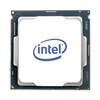

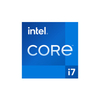
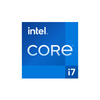
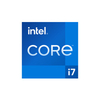
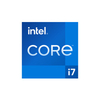
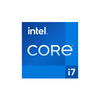







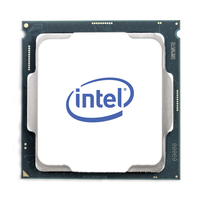
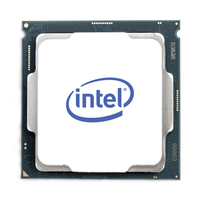

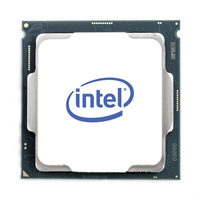


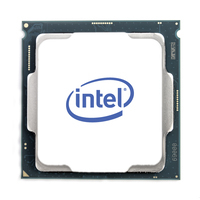
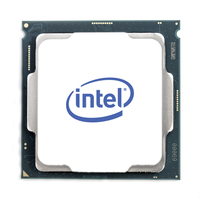
 Denmark
Denmark